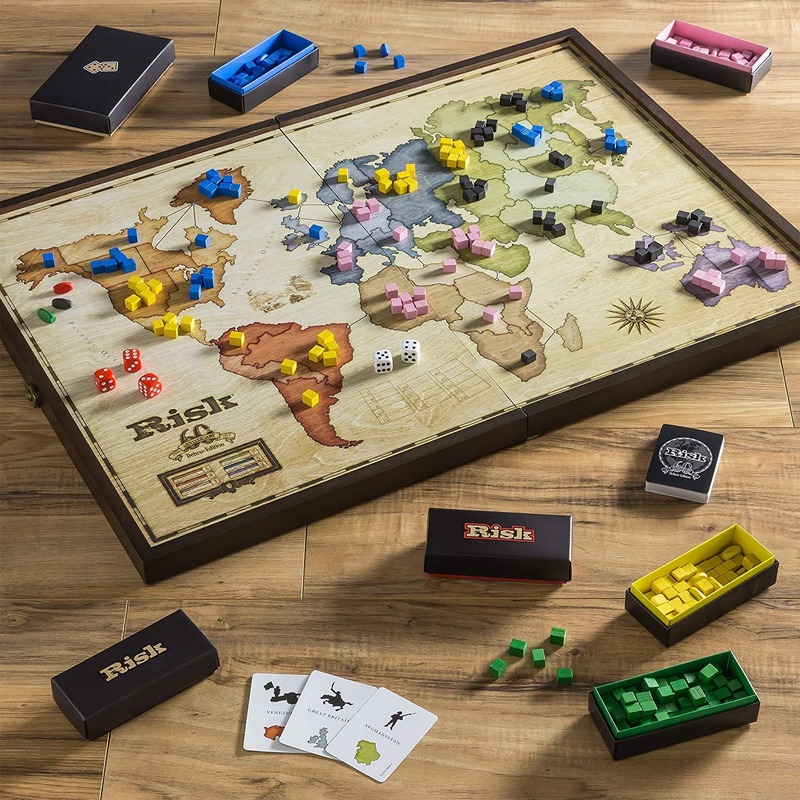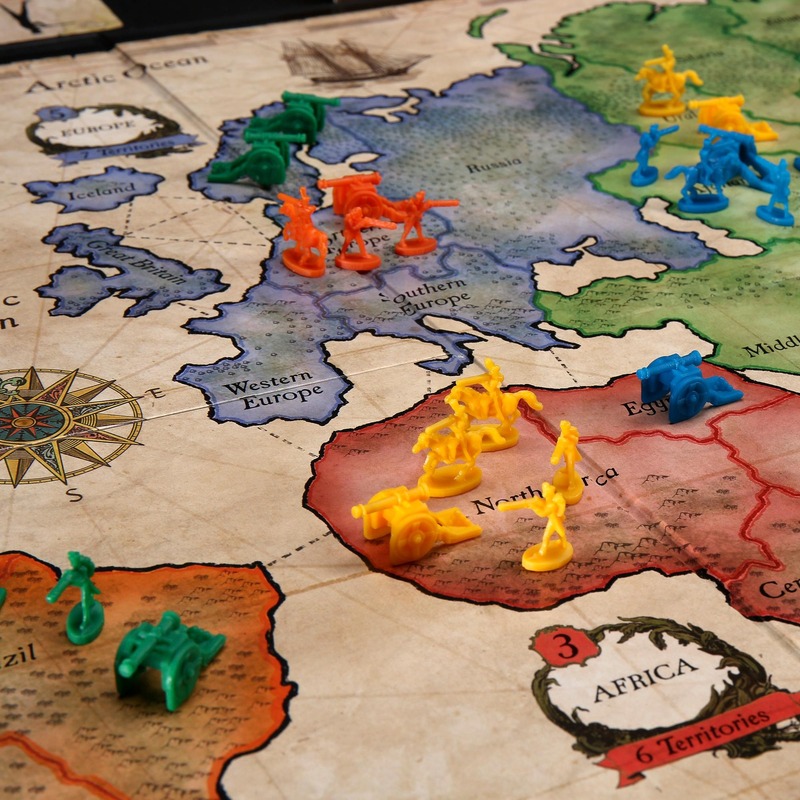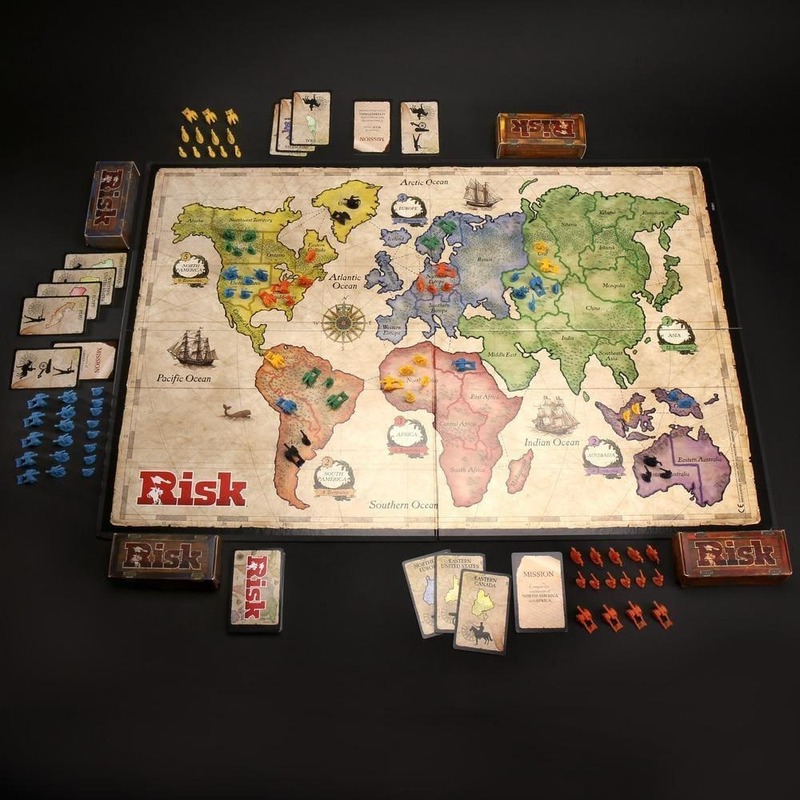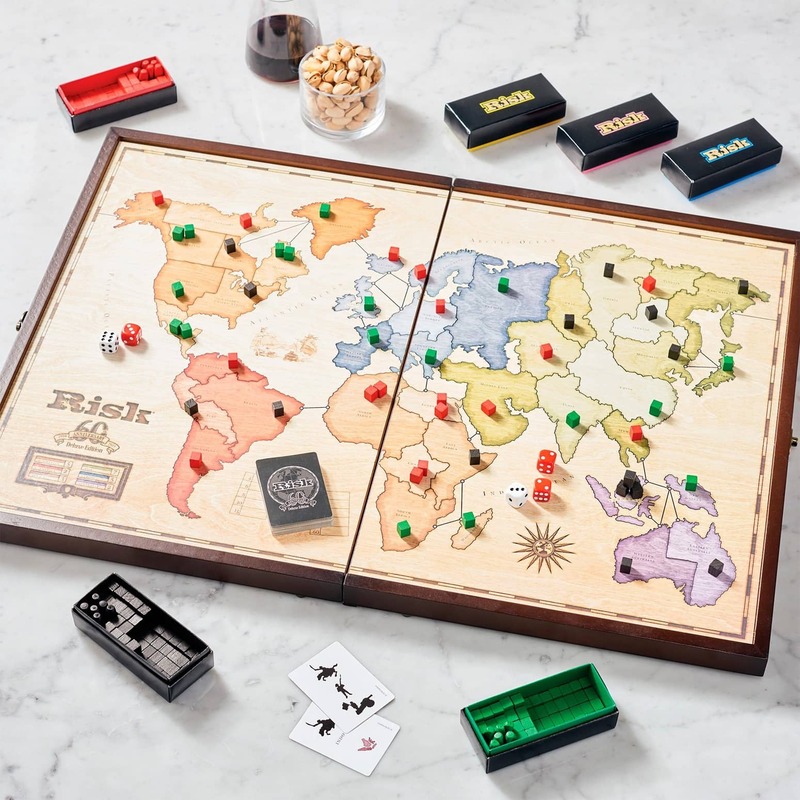Introduction to Risk 2025 Board Game
Risk 2025 is the modern iteration of the classic board game of strategy and conquest. Known for its simple yet deep gameplay, Risk challenges players to battle for territorial domination. Unlike its predecessors, Risk 2025 adds new elements to revitalize the classic formula. With updated rules and game mechanics, this version caters to veteran strategists and new players alike.
The Evolution of Risk: From Classic to 2025
The Risk board game has been a beloved pastime since its inception in the late 1950s. Over the years, it has evolved to include various themes and rule sets that reflect the changing tastes of players. Risk 2025 represents the latest milestone in this evolution, offering a futuristic take on the geopolitical landscape. In this edition, the traditional Risk board game rules are enhanced to offer fresh challenges. Innovations such as varied objectives, diplomacy options, and dynamic events promise a unique gaming experience for enthusiasts of the series.

Setting Up the Game
Before diving into the nuances of Risk 2025, it’s important to set up the game correctly. This involves understanding the components included and how the game board should be laid out for optimal play.
Components and Game Board Layout
Risk 2025 comes packed with several core components essential for gameplay. Inside the box, you’ll find an updated game board depicting a futuristic world map, divided into territories. These territories form the battleground where players contest for dominance. Besides the map, there are various armies represented by different colored miniatures, cards that dictate gameplay, dice for resolving conflicts, and mission cards that offer additional goals. Arrange the game board in the center of the table, ensuring all players have clear access and can see the entire map.
Assigning Territories and Starting Armies
The initiation of Risk 2025 starts by deciding player turn order, typically using a dice roll. Following turn order, players begin assigning territories. Depending on the number of players, territories can be distributed randomly or selected strategically. Each player will claim a territory by placing an army there until all are occupied. Once territories are assigned, players place additional armies on their controlled territories to fortify their starting positions. The distribution of starting armies is a critical factor that can influence early gameplay strategies. It is crucial to balance your forces as you set them across the board, keeping a keen eye on potentially vulnerable or strategic areas. Engage with the Risk board game rules to verify the number of starting armies based on player count, preparing you for the initial phase of conquest and defense.
Understanding the Rules of Risk 2025
Mastering Risk 2025 involves becoming familiar with its specialized rules. Herein lies the key to outmaneuvering opponents and conquering the board. This section provides an overview, focusing on what sets this edition apart from classic Risk and the phases of gameplay that dictate the flow of the game.
New Rules and Variations from Classic Risk
Risk 2025 introduces new twists that distinguish it from the classic Risk board game rules. One notable alteration is the addition of commanders, elite units that offer unique abilities and bonuses in battle. Another variation is the implementation of cities, which players can fortify and use as strongholds. These innovations require players to revise their strategies to leverage the new mechanics effectively.
Special cards called event cards can disrupt planned strategies by introducing unexpected elements that players must adapt to. The dynamic nature of these events keeps the game fresh and engaging. Risk 2025 also includes a varied objective system, so victory isn’t solely dependent on total domination. This offers players alternative paths to winning, such as completing specific missions.
Phases of the Game: Draft, Attack, and Fortify
The gameplay of Risk 2025 unfolds in three fundamental phases – Draft, Attack, and Fortify – each contributing to the game’s strategic depth. During the Draft phase, players receive and deploy new troops, reinforcing their territories based on their controlled areas and continent bonuses. Strategic troop placement is vital, as it sets the stage for potential conquests or defensive stands.
The Attack phase is the core of the Risk experience, where the dice roll as armies clash over territory. Engaging enemies requires tactical decision-making and risk assessment. Success could expand your empire while failure might leave you vulnerable to counterattacks.
Lastly, the Fortify phase allows players to reposition a number of their troops to strengthen their defensive lines or prepare for future offensives. This phase is crucial for adjusting to the fluid battle lines on the Risk 2025 board and can be pivotal in turning the tide of war to your favor.

Strategies for Early Game Dominance
Dominance in the early game of Risk 2025 hinges on strategic decisions you make during setup. Your initial territory selection and army placement can determine the trajectory of conflict for the rest of the game. To gain an advantage from the start, you must focus on two key facets: choosing the right territories and striking the right balance between offense and defense.
Choosing Strategic Territories
When you’re assigning territories at the start of Risk 2025, think beyond mere occupancy. Aim to select territories that give you strategic advantages. Hold regions that are easily defensible, have access to bonus armies, or serve as gateways to expand your empire. For instance, occupying an entire continent early can be a game-changer since it offers additional troops during the draft phase. However, don’t overlook territories that may seem insignificant but could serve as buffers or create a staging ground for future attacks. Keep the risk board game rules in mind as you choose, but also trust your instincts.
Balancing Aggression with Defense
Once your starting positions are established, you must consider your aggression level. Charging forward to capture new territories is tempting but risky. Allocate enough troops to maintain defense, as spreading too thin can make you an easy target. Conversely, playing it too safe can lead you to miss early-game opportunities to seize critical regions and build a strong foundation for later in the game. It’s about finding the middle ground: assert aggression to make gains but always have a defense ready to repel any counter-strikes. Remember, early dominance in Risk 2025 sets the pace, giving you a lead that, if maintained carefully, can eventually lead you to victory.
Mid-Game Tactics
As the game of Risk 2025 progresses, the mid-game emerges as a critical phase where players must adapt their strategies to the evolving landscape of the board. It’s a period that often determines the transition from early skirmishes to decisive end-game moves. To navigate this stage effectively, players must focus on two main tactics: the art of alliances and betrayals, and the science of managing and reinforcing armies.
Forming Alliances and Betrayals
Alliances in Risk 2025 can be powerful tools for survival and expansion. When forming alliances, choose partners who complement your strategic goals. Make deals to secure borders or coordinate attacks against common foes. However, be cautious as alliances are temporary. Betrayal is a part of the game and timing is everything. Backstabbing an ally at the right moment can turn the tide in your favor, but do it too early, and you may become the board’s biggest threat and a target for others. Use risk board game rules to gauge the best moment to shift alliances.
Managing and Reinforcing Armies
Effectively managing and reinforcing your armies is vital to maintaining your stronghold and preparing for later conquests. During the mid-game, always ensure your territories are defended according to the risk they face. Use the draft phase to bolster your frontlines and support regions under pressure. Efficient army management is about positioning troops where they can make an immediate impact. Reinforce strategically, considering both offense and defense, and remember to leave no territory defenseless. The right balance can deter opponents and give you a commanding advantage as you head towards the game’s final stages.
Advanced End-Game Strategies
When the game progresses towards its climax, advanced strategies become paramount. Successful players will recognize the criticality of timing and will have a strong grasp on when to attack or hold back.
Timing Attacks and Exploits
As the end game approaches in Risk 2025, timing your attacks becomes vital. To outsmart your opponents, you must watch for weak spots in their defenses. Strike when they overextend or after a failed attack that leaves them vulnerable. Also, exploit any event cards that disrupt your enemies. Quick, decisive moves can secure a win.
Securing Continents and Negotiating Peace
Gaining control of continents can greatly boost your troop numbers. Make a strong push to secure entire continents to receive extra armies. But, as you advance, be strategic about forming temporary truces. These allow you to focus on other threats. Offer peace to one opponent while you conquer another area. Negotiating effectively can provide you with a crucial edge as you vie for ultimate control.
Tips for Adapting to Changing Dynamics
In the world of Risk 2025, the game can swiftly take new turns. The ability to adapt is just as important as any well-planned strategy. Here, we discuss how to handle sudden changes and respond to opponent actions.
Handling Unexpected Setbacks
Setbacks can hit hard in Risk 2025, testing your resolve. When faced with unexpected events, stay calm. Review the risk board game rules to make sure you understand your options clearly. Adapt your strategy right away; don’t waste time dwelling on the setback. It’s often wise to fall back and regroup, especially if you’ve lost key territories. Look for opportunities in these setbacks. Sometimes, they open up new paths for attack or reveal an opponent’s weakness.
Unexpected events like a natural disaster or an opponent’s surprise attack can turn your plans upside down. Keep a reserve of armies when possible. This helps to recover lost ground or defend against further attacks. Always have a plan B. If an ally turns against you or a continent slips from your grasp, your secondary plans can save the game for you.
Adapting to the Moves of Your Opponents
Your opponents will also make moves that impact the game. Stay sharp and watch their plays closely. Change your tactics if someone becomes too strong or if a weaker player leaves a gap. react swiftly to block an opponent’s advance. Don’t let them take an inch without a fight. Shift your armies to counteract their strategies. Remember, keeping a flexible mindset ensures that you’re always one step ahead.
Building a strong defense along your borders can stymie your opponents’ plans. Communicate with others to form new alliances as the game landscape changes. When an opponent makes a bold move, don’t panic. Consider how you can use the risk board game rules to your advantage. Turn their aggression into your opportunity. In Risk 2025, the tide can change quickly. Stay ready to adapt, and you’ll navigate the changing dynamics with finesse.

Additional Game Modes and Variants
Risk 2025 is not just about classic play. It offers new modes and rule variants.
Playing with Mission Cards
In Risk 2025, mission cards add another layer to the game. Players get unique missions that offer secret goals apart from just conquering the world. These goals could involve capturing certain continents or defeating a specific player. Completing these missions can lead to instant victory, adding suspense as players guess others’ objectives based on their moves.
Mission cards can shift your focus from broad strategies to more specific, targeted plans. They can alter the flow of the game and force new alliances or rivalries. Use these cards to guide your troop placements and attacks but keep your real intent hidden. Winning may come from a well-timed mission completion rather than total dominance.
Alternative Rules and House Rules
Risk 2025 players often customize the game with house rules. This creates diverse experiences and resolves any conflicts over risk board game rules.
Common alternative rules can limit the number of rounds or change how armies are drafted. Some players might institute a ‘no alliances’ rule for a more challenging and competitive game. House rules are agreed upon by all players before starting, ensuring a fair understanding of the game’s conduct.
Always consider the balance and enjoyment of the game when creating house rules. They should make the game more fun, not less fair. Remember to communicate clearly with other players about any changes to the standard risk board game rules. This prevents misunderstandings and keeps the game enjoyable for everyone.





